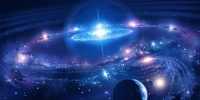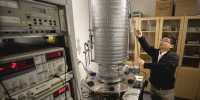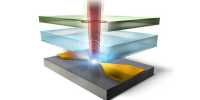A variant of Einstein’s thought experiment, made feasible by technical advancements, has verified a key concept of quantum physics. Individual particles, rather than statistical methodologies, are used by the researchers to demonstrate quantum superposition. A group of scientists used neutrons in a double-slit experiment, adding spin measuring equipment to analyze each neutron’s journey with the rigor that earlier generations of physicists could only dream of. The scientists describe a finding compatible with the neutron separating itself, with part of it passing through each slit, in the journal Physical Review Research.
Dr. Stephan Sponar of the TU Wien Atomic Institute and co-authors utilized a typical beam splitter to allow neutrons to go in two directions. They merely applied a magnetic field to one channel and then assessed the effect on the spin of each neutron. “The results reveal that individual particles experience a particular percentage of the magnetic field applied in one of the pathways,” the research states. “The route presence found […] is not a statistical average, but rather applies to each individual neutron.”
The research backs up a claim made by physicists for over a century, but using a way that many thought was impossible. The two-slit experiment, in which light is projected through two thin holes in a slide before striking a screen behind it, is commonly used as an introduction to quantum physics courses. Water going through two slots like this forms an interference pattern in the real world as the two waves interact. Meanwhile, solid items like baseballs would travel through one slit or the other without interfering with each other.
The two are combined by light, or subatomic particles. “An interference pattern is formed behind the double slit in the conventional double-slit experiment,” Sponar said in a statement. “The particles travel in a wave through both apertures at the same moment, causing the two partial waves to collide. They strengthen each other in some locations and cancel one other out in others.” This is an example of how, down to the atomic level, objects may be both particles and waves. For decades, physicists have proved this phenomenon by lowering the light output from a source to the point where only one photon reaches the slide at a time.
When this happens, the photon interferes with itself in the same way that many photons would, with some going through one slit and some through the other, demonstrating its dual nature. Quantum superposition, or a thing existing in two places at the same time, is demonstrated by a photon passing through both slits at the same time. However, just as students begin to believe that quantum physics isn’t as difficult as they were led to believe, they are thrown a curveball. Superposition will be lost if the photon’s transit is measured (at least if the measurement is reliable). The act of observing has an impact on the outcome. To circumvent this and demonstrate superposition in action, statistical analysis of where many photons fell on the screen was required.
The photon was substituted by a neutron in this experiment. Despite this, they claim to have detected the neutron without violating superposition in the process. The authors’ superior technology allowed them to measure how much the magnetic field affected each neutron’s spin without distorting the data. “When measuring a single particle, our experiment clearly reveals that it must have traveled two pathways at the same time and quantifies the relative quantities,” Sponar added. If verified, the experiment would put an end to last-ditch attempts to explain the results of past double-slit investigations without using superposition.















